[dropcap]P[/dropcap]eople who live with spinal cord injury may feel like there is no hope for a cure, but The Big Idea is a treatment for those living with Spinal Cord Injury (SCI). The treatment is Epidural Stimulation which is an application of electrical current to the lower spinal cord using little chips that are implanted over the spinal cord. When the simulator is on, the paralyzed person can move. One of the few people who got this treatment was Christopher Reeve.
Christopher Reeve was an actor, director, screenwriter, author, activist, and equestrian. He was well known for his role in Superman, but was also in Street Smart, Somewhere in Time, The Remains of the Day, and The Bostonians. On May 27, 1995, Christopher Reeve became paralyzed neck down when he was thrown from a horse during one of his equestrian competitions in Culpeper, Virginia. Reeve has been just one of many people who get injured from riding accidents. The reality of horseback riding is that it is one of the most dangerous and difficult sports you can participate in.
Here are a few events equestrians compete in that could end badly.
1. Barrel Racing
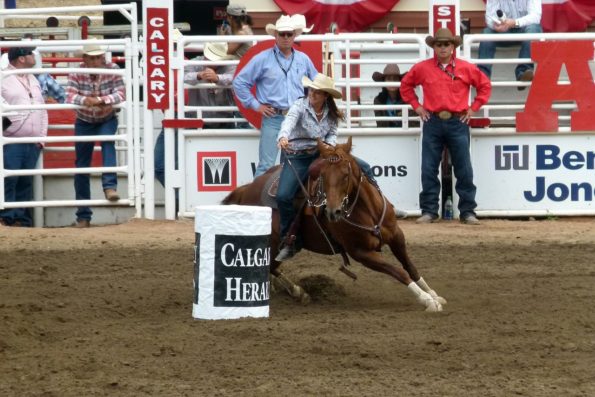
Barrel Racing is an event that is competed in WSCA, UBRA, rodeo, and other organizations. The event has three barrels and you circle each barrel and run back across the timer. The objective of this event is to get the fastest time without knocking barrels, crossing the timer before you finish, falling off, or breaking the pattern.
One of the key things for a good barrel run is footing. If the arena you compete in does not have good footing your horse could slip and fall which could cause an injury to the rider or the horse.
Another way either a horse or its rider can be injured is from outside distractions. The people or animals outside the arena could cause your horse to spook. It could be a dog barking or people sitting on the fence. No matter what it is if the horse spooks the rider needs to regain the horse’s control which for some riders whether they are experienced or not could be difficult.
Even pro riders, like Lara Dewees, can get injured. Lara Dewees was a professional barrel racer until she participated in a rodeo in Mississippi. Her horse fell while turning the third barrel, got up and took off. At that time Lara did not have the reins so she couldn’t control her horse. A witness described, “When her horse hit the asphalt, she lost her footing, spun around and essentially pancaked, throwing Lara face-first into the asphalt.” She was rushed to a hospital with a head injury and broken bones. She died on February 28.
Statistics shown by Sara Mastellar show that 6 per 1000 competitor exposures are injured in barrel racing. This is good compared to bull riding and bronc riding.
Barrel racing is a popular rodeo sport and can excite people of many ages. 8-year-old Bralea Couch started riding… https://t.co/yuROeu1lHu
— newswest9 (@newswest9) November 10, 2017
2. Cross Country
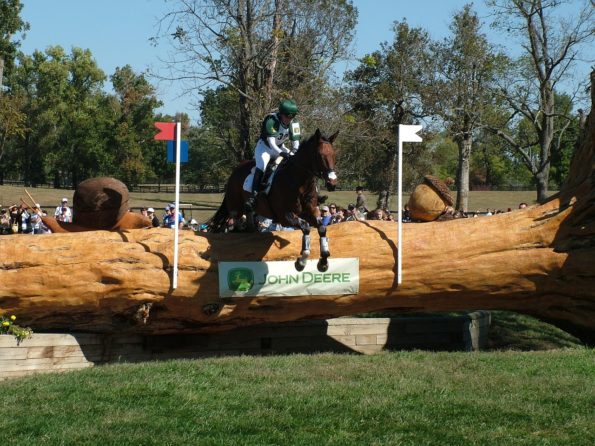
Eventing has three parts: Cross country, show jumping, and dressage. This competition can be all in one day or it can be distributed to three days. Cross country can be ran one at a time or it can be a race with 4 riders running at the same time. If there are 4 people running at the same time the event is referred to as team chasing.
Cross country is an event that judges a horse’s speed, endurance, and jumping ability. Debby Sly author of Encyclopedia of Horses wrote, “The winners are the pair achieving the highest marks, and who also complete the course without any jumping penalties” (114). The event also judges a rider’s knowledge of their horse’s pace over long distances.
The course can be up to 4 miles long with 24 to 36 obstacles. The course can have different terrain, for example, it could be flat fields or it could have multiple hills.
The rider needs to give the horse enough time to organize himself so he can clear the jump safely. If the horse fails at jumping the fence, he will fall because the fences provided for cross country are solid and won’t fall down if hit by the horse. Therefore the rider and horse need to wear protective equipment to stay safe.
3.Show Jumping:
Show jumping is a highly popular sport in Europe and the United States. Each rider is judged on their horse’s jumping
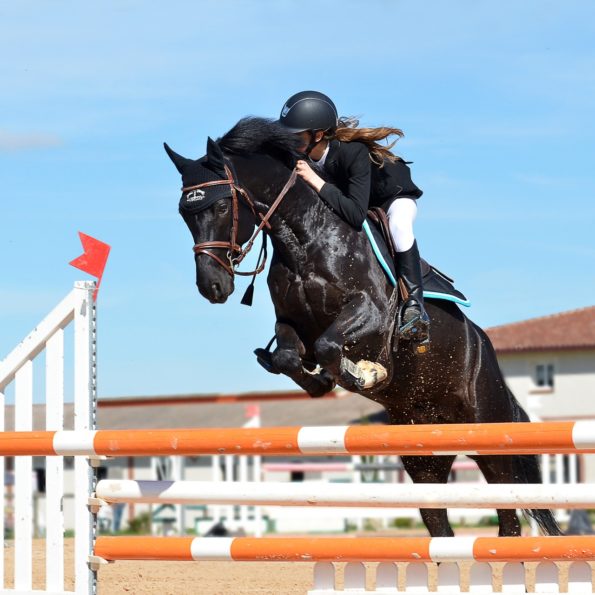
performance. The rider gets penalties for knocking poles, refusing the jump, exceeding time (if timed event) or falling off.
Debby Sly author of Encyclopedia of Horses states, “Show jumping courses are often set up in a relatively small area, requiring a horse and rider to be able to jump, land, and turn quickly and smoothly, still in balance, to the next fence” (117).
To compete in this event a rider needs a lot of training with their horse because they need to be balanced and in rhythm with their horse’s stride to make it to each fence.
Hickstead was a gold medal show jumping horse that loved competing just as much as his rider. During a show in Verona, Italy Hickstead collapsed after “a nearly flawless round of show jumping at the sports highest level, the Grand Prix.” The cause of Hickstead’s death was a heart failure.
4. Vaulting
Vaulting is a less known event where the riders are doing gymnastics on a horse that is cantering in a circle. People that compete in vaulting compete as an individual, team, or in pairs. All ages and all genders compete in this event. Although there are some rule changes depending on how experienced you are. If you are a beginner, you can compete with the horse at a walk or trot while more experienced riders compete at a canter.
Unlike the equipment used in other equestrian events vaulting uses a surcingle and a back pad instead of a saddle. The horses still wear a bridle while they are lunged mainly counterclockwise. There are many different moves that the riders could do during their performance. These moves could end with the rider falling and/or injuring themselves.
[embedyt] https://www.youtube.com/watch?v=qBFuLWFLoxc[/embedyt]
5. Racing
The most common equestrian sport is racing. These races can have 2 or more horses ridden by a jockey. The
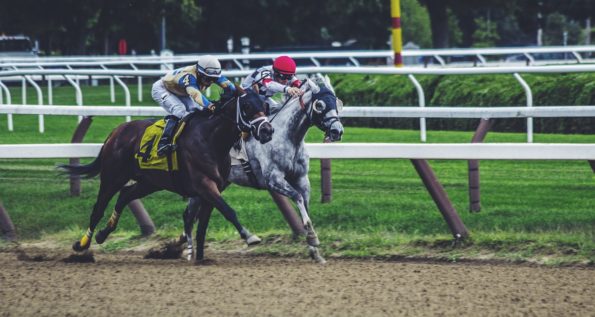
tracks are commonly oval and the length ran changes. The length can be anywhere between 400m to 2.5 miles.
The equipment used for a race is as light as possible to allow the horse to run without strain.
The training process for these horses depends on the length of the race they are running and how old they are.
Both the horses and the riders that compete in these races are at risk for injury. CBS News’s article Eight Belles’ Death Sparks Controversy states, ” Saez was riding in his first Kentucky Derby when Eight Belles broke both front ankles while galloping out a quarter-mile past the finish line.” Eight Belles was euthanized on the track because of this injury.
6. Steer Wrestling
Steer wrestling is an event competed in rodeo. The objective is for the rider to chase a steer, jump off the horse, and
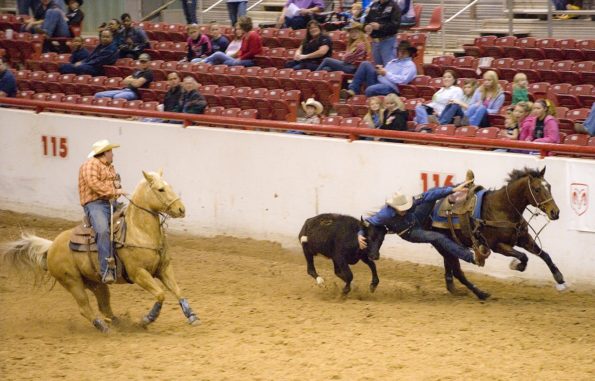
tackle the steer to the ground in the shortest amount of time. When the steer is released from the chute the steer wrestler has to wait till the barrier in front of them is released. Then they can catch up to the steer. The time is recorded when all four legs of the steer are off the ground.
Just like other events you can get penalties and a no time. You get a penalty if you break the rope barrier. You can get a no time if you miss the steer when trying to wrestle it.
There are many people who disagree with this sport and think that “it is an abusive event developed simply to amuse people of questionable character and intelligence” (Showing Animals Respect and Kindness).
This sport is also dangerous for the rider tackling the steer. Statistics shown by Sara Mastellar say 50 per 1000 competitor exposures are injured in steer wrestling.
7. Calf Roping
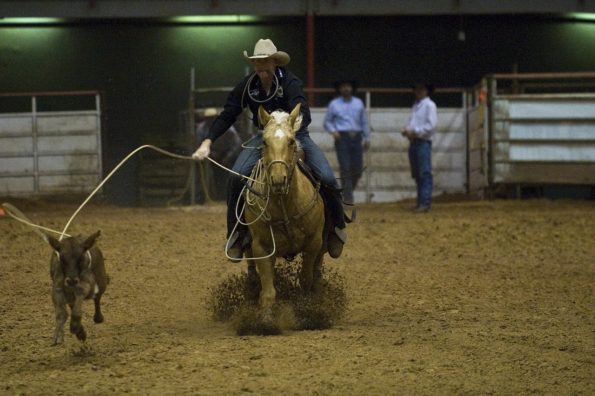
Calf roping is a timed rodeo event where a calf is released from a chute, then the rider has to go and rope it. After the rider ropes the calf, they jump off their horse and ties 3 of the calf’s legs together. A good time to get in this event is under 9 seconds.
Statistics by Sara Mastellar shows there are 8 injuries per 1000 competitor exposures.
Animal activists gathered at Cheyenne Frontier Days when “a calf sustained a back injury when slammed to the ground during roping contests.”
Dr. T. K. Hardy, a veterinarian, “stated that 2 or 3 calves are injured in each practice session and have to be replaced.” More calves get injured than people during calf roping. Since so many calves are injured animal activists protest at rodeos. An example of these protests is activists attending the Orange County Fair rodeo and wearing “bright T-shirt with the phrase ‘Rodeos Hurt Animals.'”
8. Rescue Race
Rescue race is a WSCA event that involves 2 riders. One rider is mounted on a horse and the other is at the opposite end of the arena. When the mounted rider gets to their partner the horse gets close enough for the second rider to jump on, then they run back.
The second rider is in danger during this event because they could get ran over or not be able to jump onto the horse.
[embedyt] https://www.youtube.com/watch?v=GhPRHc3HT6E[/embedyt]
9. Steeplechase
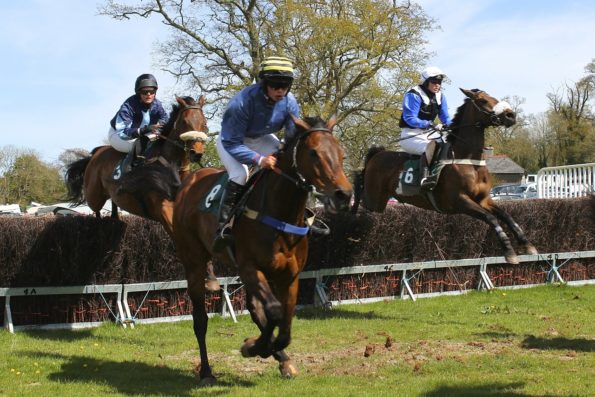
A steeplechase race is a race over long distances with jumps. There can be up to 40 people in the race at a time. Since there are so many people the event is considered dangerous when the riders get to a jump.
The start of the event “was rooted around a simple bet between two Irish gentlemen more than 250 years ago” (The Steeple Chase Horse Race).
This event is also targeted by animal rights activists because they think that since the horse can’t say whether they want to run the event, they should not run the dangerous event.
Some of the jumps attempted in this event are really hard for the horses to jump over. England’s Grand National is the most famous steeplechase because of a jump that has caused 24 horses to die. Although the jump caused this many injuries and fatalities, many people still attend the steeplechase to either watch or participate in. Others go to try and cancel or delay the event. Many people like Marek Stromsky have to stand back and watch when their horse is injured: “His horse, Cieszymir, was cut off by another horse on the run-up to Taxis and, lacking the necessary pace, broke a leg after falling through the hedge. Stromsky said that there was ‘no time to feel fear’ once the jump began and that he knew the horse would not make the jump. ‘The horse was taken away by the doctors,’ he said. ‘I stood next to the jump and waited until the race was over. You know there is no help for the horse. You only feel sadness.'”
10. Bronc Riding
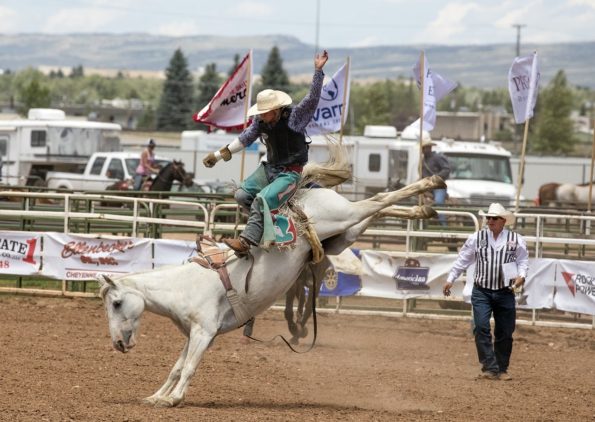
Bronc riding is an event where the rider rides a horse that is trying to buck them off. The objective is to stay on for at least 8 seconds without touching the horse.
In Equestrian Injury statistics by Sara Mastellar, it is shown that there are 141 injuries per 1000 competitor exposures.
There are 2 types of bronc riding: one where the rider has a saddle and one where the horse is bareback.
Saddle Bronc Riding
The saddle that these riders used is specialized for the event. They have no horn. Instead, the rider grips onto a rein connected to the saddle and the horses halter rope.
Bareback Brock Riding
This event is exactly like saddle bronc riding, except it does not use a saddle. Instead, of a saddle, the rider uses a rigging.
Bronc riding is overall the most dangerous sport that an equestrian can compete in. Jessica Belasco author of Rodeo Cowboys Pay HIgh Price in Injuries states, “Competitors in other “rough stock” events, including bareback riding and saddle bronc riding, also face more risk of injury than those competing in timed events, such as team roping, barrel racing, and steer wrestling.
[perfectpullquote align=”left” bordertop=”false” cite=”” link=”” color=”” class=”” size=””]Horses have a mind of their own[/perfectpullquote]
70.3% of people said horseback riding is a sport and 81.1% said it is a difficult sport. Most of the people that I know that don’t consider horseback riding a sport say things like “Riding a horse isn’t difficult,” and “Horseback riding is not a sport because all you do is sit on the horse while it does all of the work.” All of those opinions are 100% wrong. When you ride a horse you don’t just sit on the horse, you control where it goes, how fast it is going, and what it is doing which takes a lot of work. If you cannot control the horse you are riding you could fall off or run into something. Although it seems easy it’s not, horses like to test you because they would rather do whatever they want instead of what you want.
Horseback riding is dangerous in general, you don’t even need to be in any type of event to get hurt. Horses have a mind of their own and if they think something is scary[perfectpullquote align=”right” bordertop=”false” cite=”” link=”” color=”” class=”” size=””]”Trust and cooperation are paramount, and riders or trainers have to work hard to understand the mind of the animal they are working with in order to get the best out of him” (99) Debby Sly author of Encyclopedia of Horses[/perfectpullquote] they will more than likely run away whether it will hurt them or not. For example, you could be on a trail ride, then OH MY GOD A PLASTIC BAG!! So if you are an equestrian stay safe and if you are not then just agree that horseback riding is a sport because it takes more effort to control a 1000 lb. horse than you think.
Featured image by kaboompics // Karolina

I AM SO IN LOVE WITH THIS POST!! I participate in MNHSRA, UBRA, MRA, PEWC, and more and have worked my butt off to be able to run competitively with the pro’s, take care of myself and my animals, and keep up good grades in school (which is extremely hard considering I attend a rodeo/Jackpot every weekend and some days during the week too during spring and fall). I really appreciate this post because a lot of the people I know don’t ACTUALLY understand how much work we put into our horses and how dangerous it really is to do something so meaningful to us. THANK YOU!!!
as a horse, i approve this article